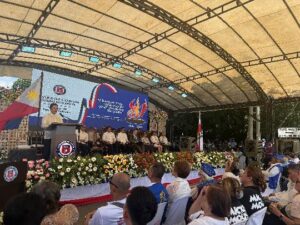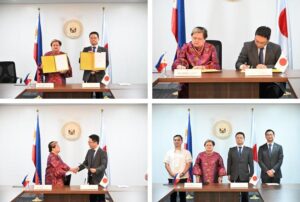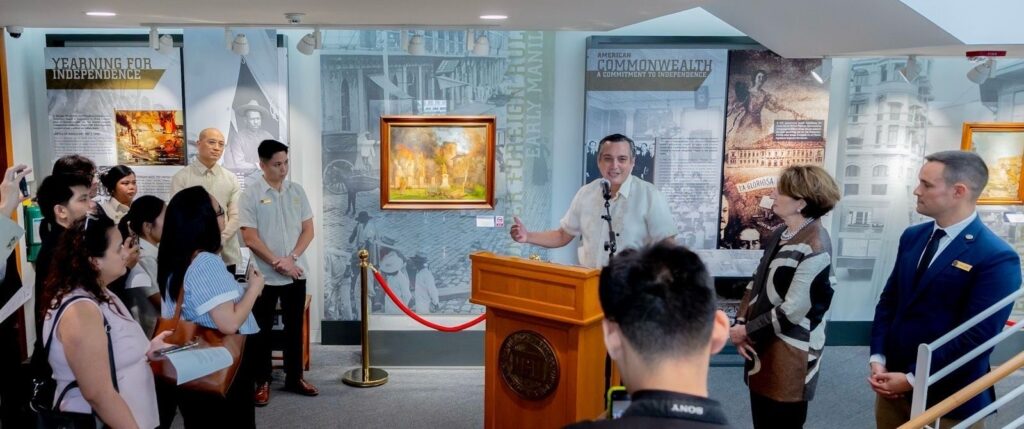
(NMP Director-General Jeremy Barns delivers his remarks before U.S. Ambassador to the Philippines MaryKay Carlson, NMP Deputy Director-General Jorell Legaspi, ABMC Superintendent Ryan Blum, Manila American Cemetery Visitor Center Director Vicente Lim IV, and members of the media at the inauguration of the “Liberation of Manila” Exhibition.)
The United States government, through the American Battle Monuments Commission (ABMC), and the National Museum of the Philippines (NMP) inaugurated on February 13 an exhibition commemorating the 80th anniversary of Liberation of Manila during World War II.
Titled “Liberation of Manila: 80 Years of Remembrance through Art,” the exhibition offers a reflection into the past and present, from the devastation of a city at war in 1945 to the resurgence of Manila with structures rebuilt in the present day.
The exhibition is open for viewing until February 25 at the Visitor Center of the Manila American Cemetery and Memorial located in Bonifacio Global City, Taguig.
“Art has the power to transcend time, to give voice to the voiceless, to capture history not as cold facts but as lived experience. The four powerful works in this exhibit, created by some of the Philippines’ most celebrated national artists, serve as a visual testament to the past,” U.S. Ambassador to the Philippines MaryKay Carlson said. “They remind us of the shared sacrifices, lives lost, and profound stories that must never be forgotten.”
NMP Director-General Jeremy Barns remarked, “The works you see here now are historical visual accounts – some of them first-hand – of the battle that was… It is the honor of the National Museum of the Philippines to have such significant treasures in its collection, and it is our further honor to share them here at the Manila American Cemetery. Together, we bear the responsibility of commemorating the struggles and victory of those who valiantly fought for our great nation’s freedom and the continued brotherhood of the Philippines and the United States.”
The four artworks were loaned to the ABMC by the NMP from its Fine Arts Collection as part of a series of events marking the 80th anniversary of the Liberation of Manila on February 22.
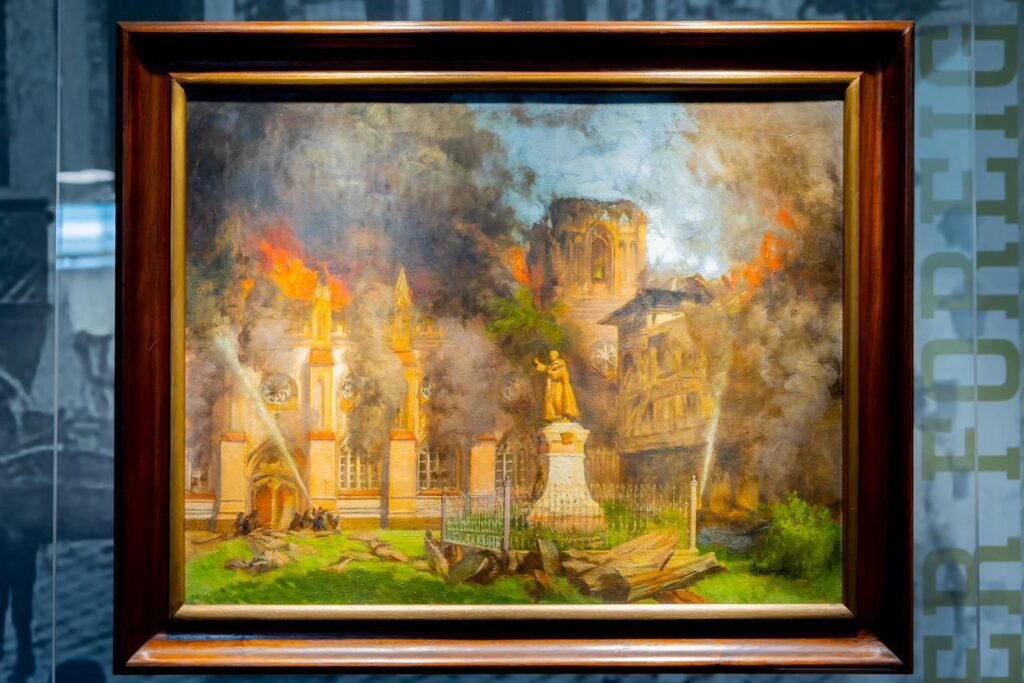
In “Burning of Sto. Domingo Church” (1942), National Artist Fernando Amorsolo’s brushstrokes capture the enormous flames that burned the centuries-old church for three days in 1941. Built in 1588, the Sto. Domingo Church was one of the first structures destroyed by Japanese bombers during the Battle of Manila. After the war, the church was relocated from Intramuros to its present location in Quezon City.
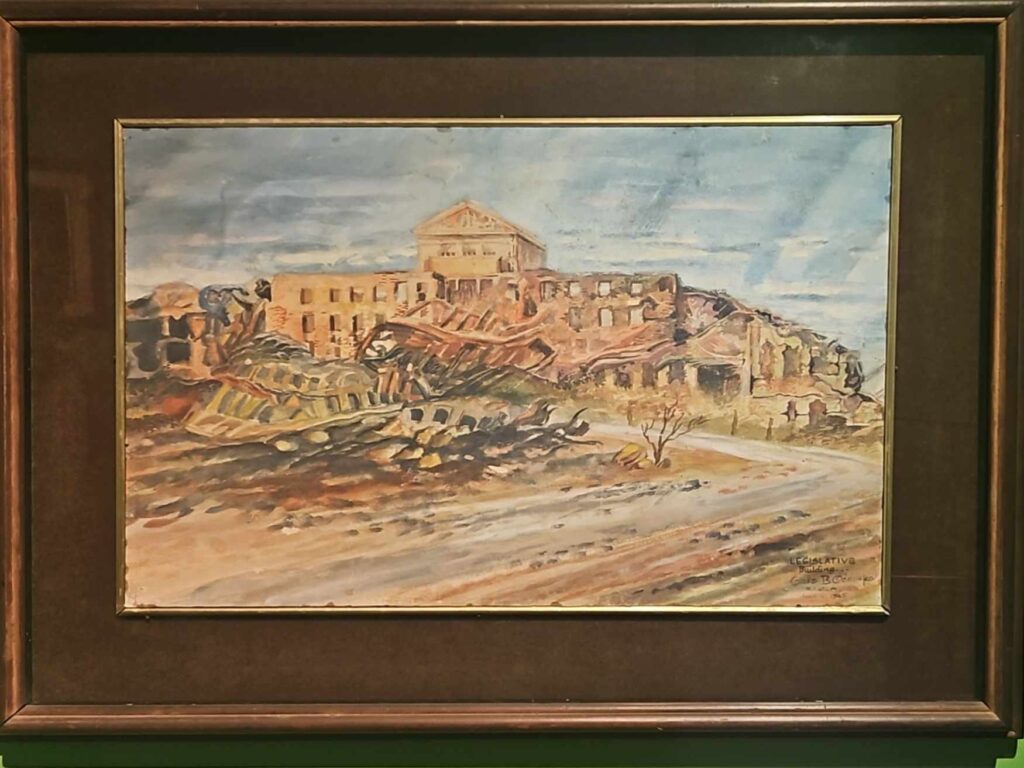
In “Ruins of the Legislative Building” (1945), Galo Ocampo, who was recognized for his art and his service in the United States Armed Forces in the Far East during World War II, illustrates the shattered remains of what was once a Japanese stronghold in the war. Today, the Legislative Building stands as the National Museum of Fine Arts.
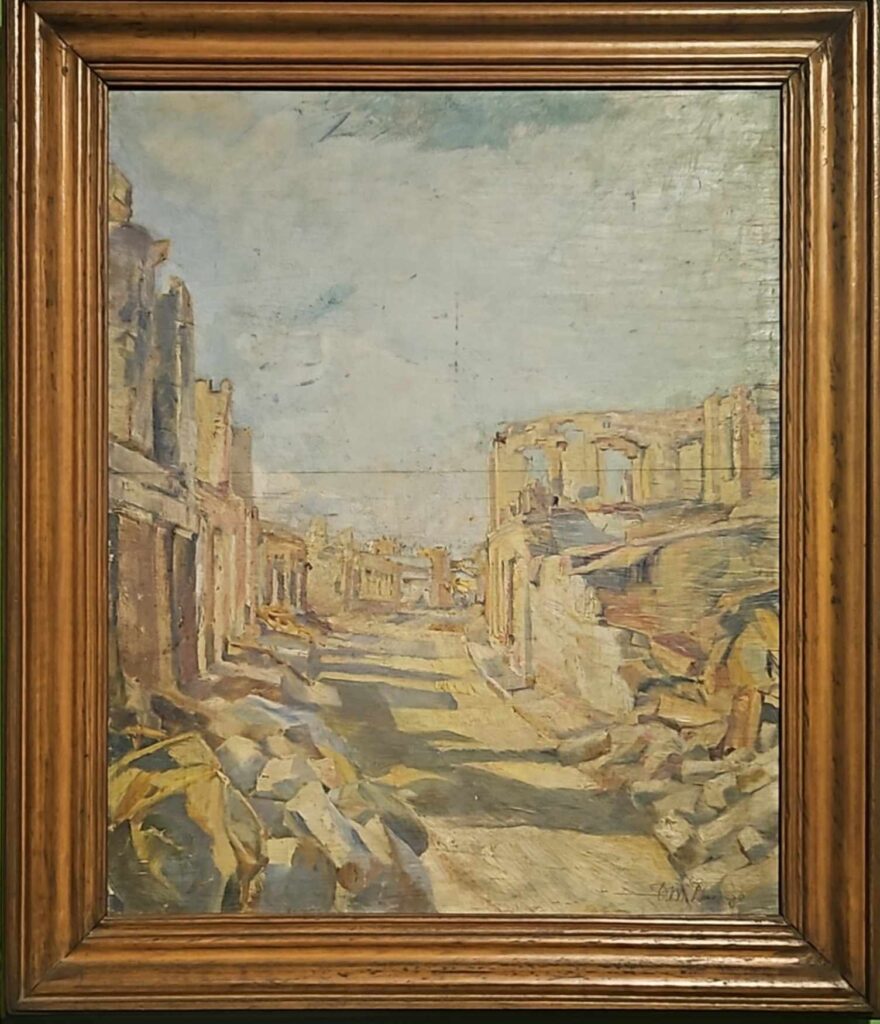
Modernist painter Diosdado Lorenzo’s “Ruins of Sales Street, Quiapo” (1946) portrays the destruction of a bustling district, renowned both then and now for its vibrant markets and heritage architecture, particularly the Quiapo Church which continues to welcome devotees to this day.
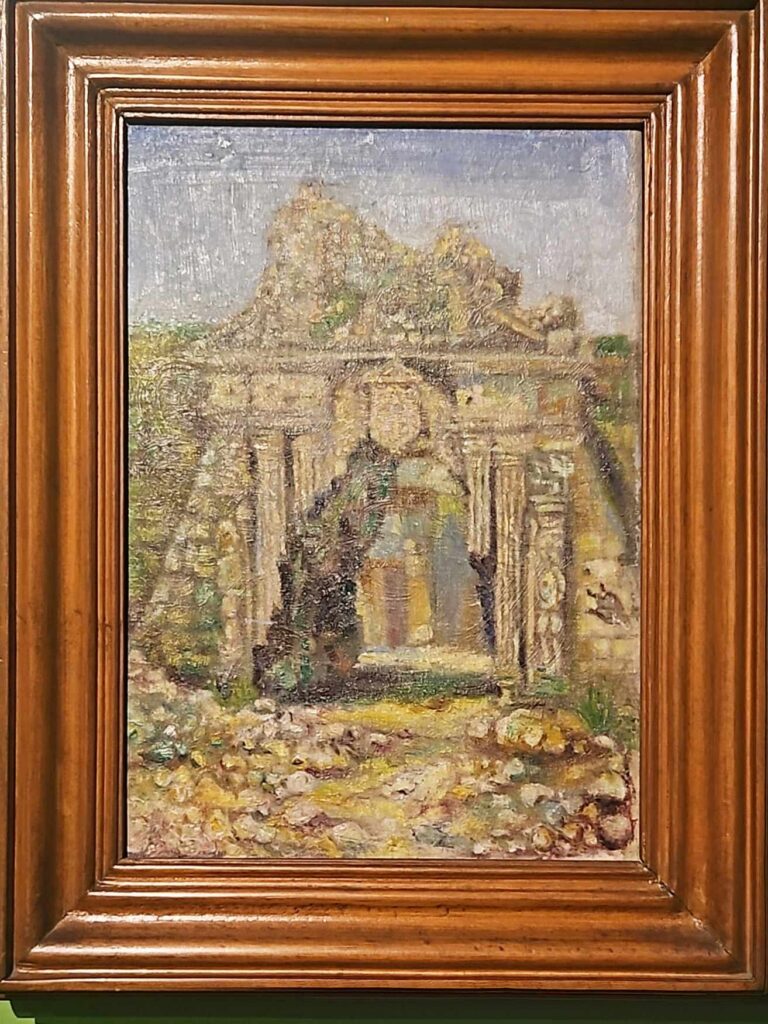
Finally, Simplicia “Nena” Saguil, a pioneer in abstract art, painted the “Ruined Gate of Fort Santiago” (1949) as a reminder of the aftermath of intense fighting in the Walled City of Intramuros. Fort Santiago’s rebuilt gate continues to tell Manila’s story and serves today as a symbol of the city’s resilience and rebirth.
